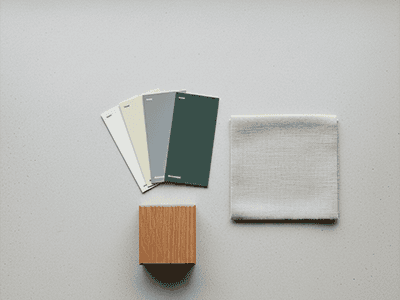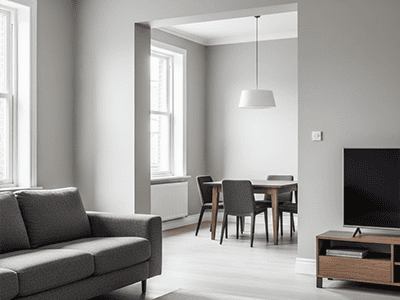How to Choose a Whole-Home Colour Scheme
Create a Seamless Flow from Room to Room
One of the biggest challenges in decorating is making a house feel like a cohesive home, rather than a collection of disconnected rooms. This is especially true in modern Aussie homes with open-plan living spaces. The secret is a whole-home colour palette – a carefully selected group of colours that work together throughout the house. This doesn't mean every room has to be the same colour; it means they should all feel connected. Here's how to build a palette that creates that beautiful, seamless flow.
Start with the Classic 60-30-10 Rule
This timeless decorating rule helps you balance colours perfectly in any space, and it's the foundation of your whole-home palette.
- 60% - Your Main Colour: This is your background neutral that you'll use for most walls. It needs to be a versatile shade you won't get sick of. Think of a workhorse warm white like Dulux Natural White or a soft, practical grey.
- 30% - Your Secondary Colour: This bolder colour adds character. Use it for feature walls, kitchen cabinetry, or large furniture like your sofa.
- 10% - Your Accent Colour: This is your "pop" of colour – perfect for cushions, artwork, and decor. It's the easiest element to change when you want a quick refresh.
How to Build Your Colour Palette
So where do you find these colours? Start with something you love that already has great colours working together.

- Find Your Inspiration: Look for items with colours that speak to you. This could be a favourite rug, a piece of art, or even the Australian landscape – think the grey-greens of eucalyptus leaves, the rich red of outback soil, or the deep blue of the coast.
- Pull Colours From Your Piece: Identify the main colours in your inspiration. Pick out a dominant neutral (your 60%), a secondary shade (your 30%), and one or two accent colours (your 10%).
- Fight the Harsh Light with the Right White: Every Aussie home needs a go-to white. A warmer white (like Dulux Natural White) can soften a room and prevent it from feeling too stark in our bright sunlight. Save cooler, crisper whites for south-facing rooms or areas with less direct light.
Creating Flow: Use Your Palette in Different Ways
The trick to making your home flow is to use your core colours in every room, but mix up how you use them. This creates connection between spaces without making them look identical.

- Living Room: You might use your main neutral on the walls (60%), a navy blue sofa as your secondary (30%), and touches of mustard yellow in cushions as your accent (10%).
- Dining Room: Here, flip the script. Keep the same neutral walls, but use the navy blue on the dining chairs and bring in mustard yellow with a vase or artwork.
- Bedroom: Go more dramatic with navy blue for a feature wall behind the bed, your neutral on other walls, and a mustard yellow throw blanket for accent.
By repeating these core colours in different ways, you create a visual connection that guides the eye smoothly from one space to the next – making your whole home feel calm and unified.
Pro Tip from a Sydney Painter
The biggest factor affecting colour in Australian homes is our intense natural light. A colour can look perfect in the morning and completely different in the afternoon glare. That's why testing large samples is so important. When we consult on colours, we always consider the home's orientation and light. Creating a beautiful, flowing colour scheme takes experience, and if you're feeling stuck, the team at DRJ Painting can provide expert advice to help you build the perfect palette for your home.

